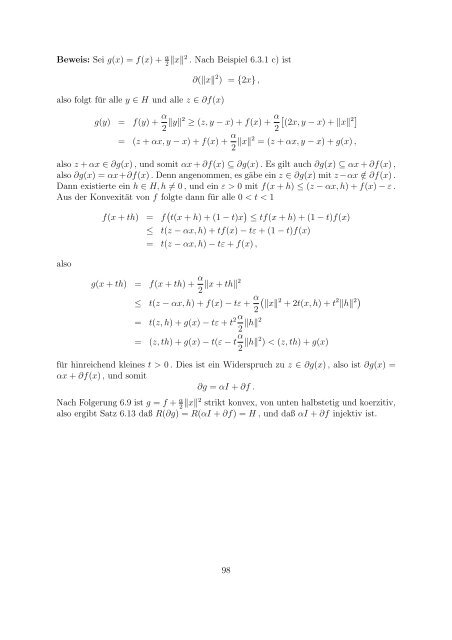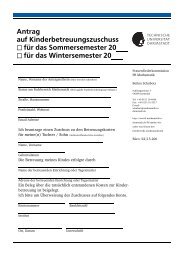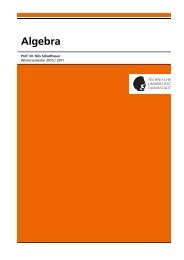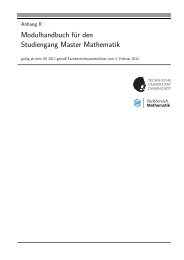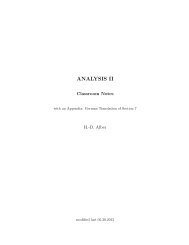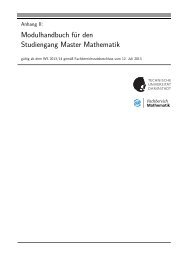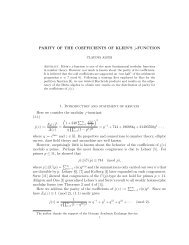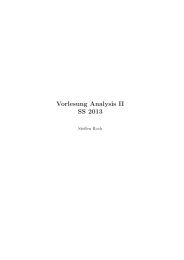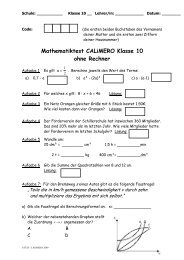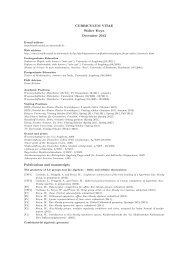Variationsrechnung und Sobolevräume - Fachbereich Mathematik ...
Variationsrechnung und Sobolevräume - Fachbereich Mathematik ...
Variationsrechnung und Sobolevräume - Fachbereich Mathematik ...
Sie wollen auch ein ePaper? Erhöhen Sie die Reichweite Ihrer Titel.
YUMPU macht aus Druck-PDFs automatisch weboptimierte ePaper, die Google liebt.
Beweis: Sei g(x) = f(x) + α 2 ‖x‖2 . Nach Beispiel 6.3.1 c) ist∂(‖x‖ 2 ) = {2x},also folgt für alle y ∈ H <strong>und</strong> alle z ∈ ∂f(x)g(y) = f(y) + α 2 ‖y‖2 ≥ (z,y − x) + f(x) + α [ ](2x,y − x) + ‖x‖22= (z + αx,y − x) + f(x) + α 2 ‖x‖2 = (z + αx,y − x) + g(x),also z + αx ∈ ∂g(x), <strong>und</strong> somit αx + ∂f(x) ⊆ ∂g(x). Es gilt auch ∂g(x) ⊆ αx + ∂f(x),also ∂g(x) = αx+∂f(x). Denn angenommen, es gäbe ein z ∈ ∂g(x) mit z −αx /∈ ∂f(x).Dann existierte ein h ∈ H,h ≠ 0, <strong>und</strong> ein ε > 0 mit f(x + h) ≤ (z − αx,h) + f(x) − ε .Aus der Konvexität von f folgte dann für alle 0 < t < 1alsof(x + th) = f ( t(x + h) + (1 − t)x ) ≤ tf(x + h) + (1 − t)f(x)≤t(z − αx,h) + tf(x) − tε + (1 − t)f(x)= t(z − αx,h) − tε + f(x),g(x + th) = f(x + th) + α ‖x + th‖22≤ t(z − αx,h) + f(x) − tε + α 2= t(z,h) + g(x) − tε + t 2α 2 ‖h‖2(‖x‖ 2 + 2t(x,h) + t 2 ‖h‖ 2)= (z,th) + g(x) − t(ε − t α 2 ‖h‖2 ) < (z,th) + g(x)für hinreichend kleines t > 0. Dies ist ein Widerspruch zu z ∈ ∂g(x), also ist ∂g(x) =αx + ∂f(x), <strong>und</strong> somit∂g = αI + ∂f .Nach Folgerung 6.9 ist g = f + α 2 ‖x‖2 strikt konvex, von unten halbstetig <strong>und</strong> koerzitiv,also ergibt Satz 6.13 daß R(∂g) = R(αI + ∂f) = H , <strong>und</strong> daß αI + ∂f injektiv ist.98


